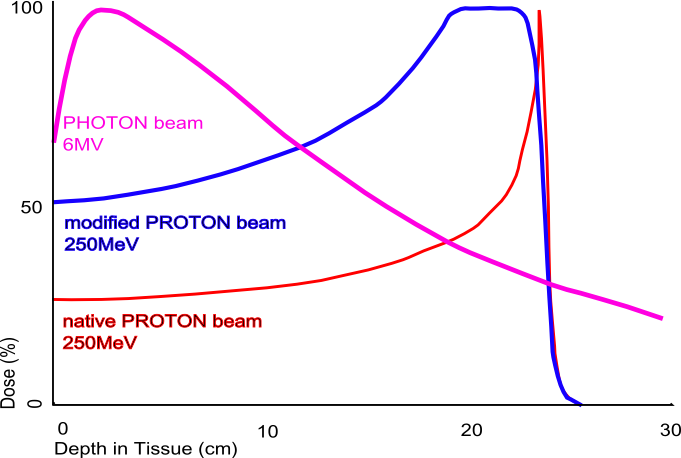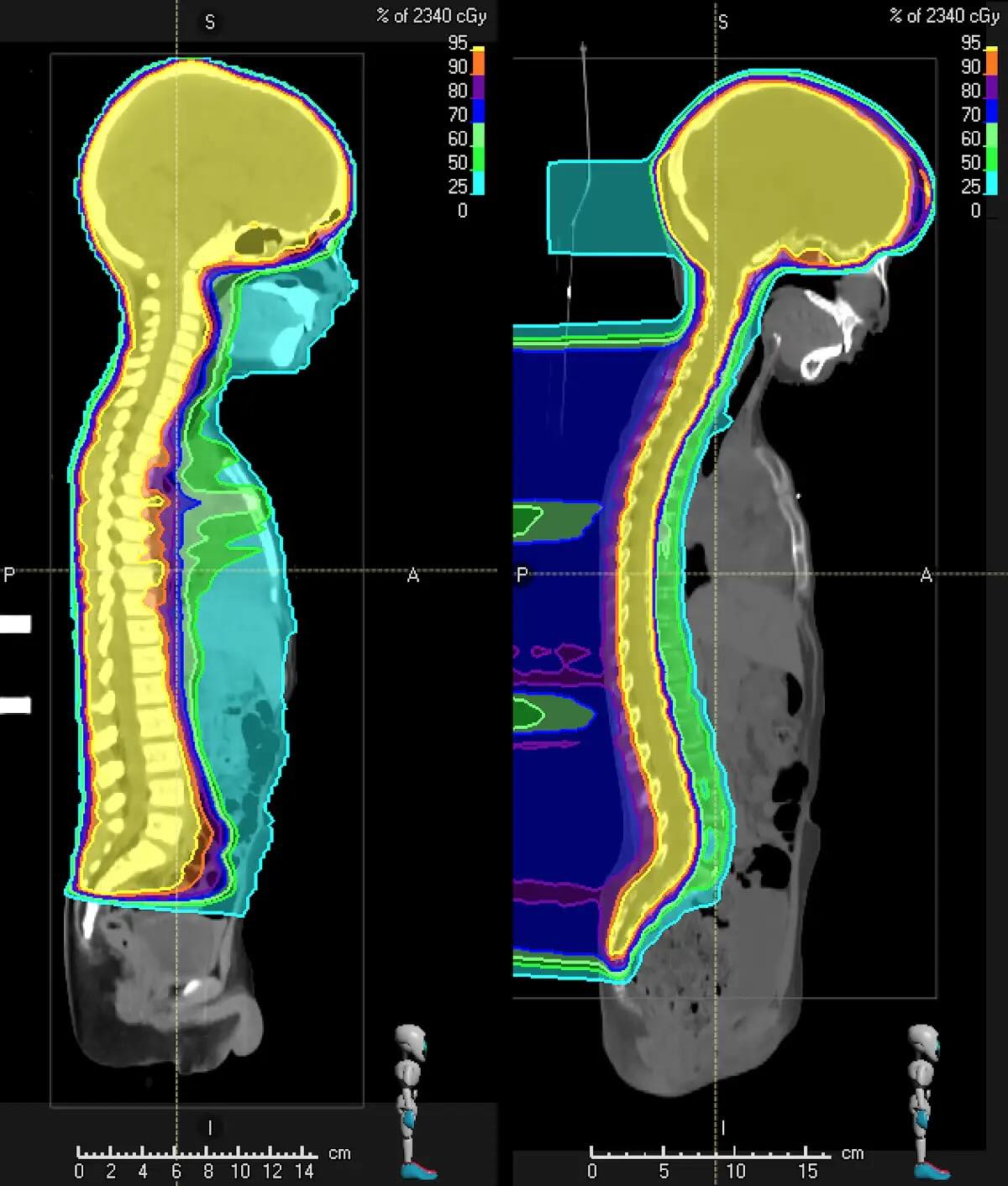What is proton therapy?

Proton therapy, or proton beam therapy, is a form of radiation treatment for cancerous and some noncancerous tumours.
Protons are found in the nuclei of all atoms, with the lightest element, hydrogen, having only a single proton in its nucleus. When heated, hydrogen atoms may be separated into negatively charged electrons and positively charged protons. These protons can be accelerated to very high speeds (around two thirds the speed of light) in a machine called a cyclotron. The beam of energetic protons can be guided with magnets in an evacuated beam line, then very precisely focused and directed onto the region of the tumour.
Standard radiation therapy has evolved and improved over the years and is effective in controlling many cancers. The standard mode or radiation-based treatment involved X-rays which are easily created and focused, but deposit energy along the entire path of the beam, through the targeted tumour and beyond. This “exit dose” of radiation can damage the normal tissue or organs near the tumour or area of concern.
One of the main advantages of proton therapy is that as the protons move through matter, such as tissue, they deposit very little energy as they slow down through collisions, but just before they come to rest, they deposit the bulk of their energy in a narrow region called the “Bragg peak.” By adjusting the energy of the incoming proton beam, and by focusing it tightly into a pencil-like beam, the majority of the cancer-killing dose is delivered within the tumour, and spares the healthy tissue around the tumour. Tumours near sensitive organs, for example near the brain, eye and spinal cord, can also be very precisely targeted. By using very advanced treatment planning it is possible to direct a proton beam of less than 1 mm diameter and effectively “paint” a radiation dose layer by layer in three dimensions over the tumour.
Proton therapy has been shown to be a highly effective form of radiotherapy treatment for a wide range of tumours. In children in particular, proton beam therapy is now recognised as superior to conventional radiotherapy techniques since there is less damage to normal tissue and a reduced risk of secondary malignancy and late effects.

Energy deposited as photons and protons move through matter such as tissue. Protons deposit most of their energy just by coming to rest in the “Bragg peak” [2].

Example of dose exposure (as a percent) with radiation targeted at the brain and spine, for a child receiving X-ray (photon) treatment (left) and proton beam therapy (right). Note how the face, neck, chest, abdomen and pelvis receive no radiation with protons [3].
Image sources:
[1] Cyklotron, CC BY-SA 4.0 https://creativecommons.org/licenses/by-sa/4.0, via Wikimedia Commons. No changes made. Link to file.
[2] Dr A A Miller, CC BY-SA 3.0 http://creativecommons.org/licenses/by-sa/3.0/, via Wikimedia Commons. No changes made. Link to file.
[3] Derek Tsang (with permission). 'Proton beam therapy: A modern treatment for cancer, but not in Canada (yet)' published Feb 7 2024 in The Conversation.
